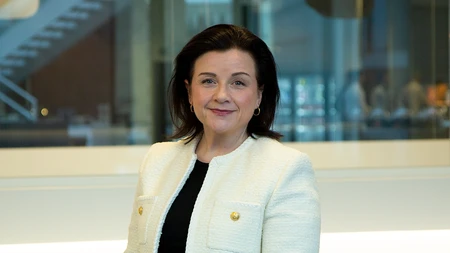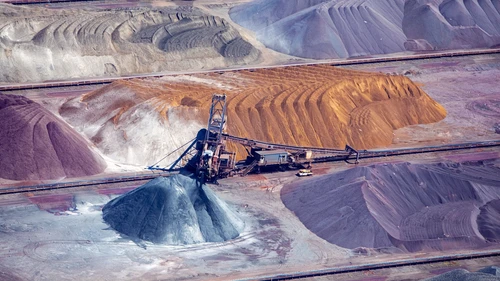
- Name:
- Marianne Bruvoll
- Title:
- Senior ESG Analyst
As Nordic countries lead the way in Bioenergy with Carbon Capture and Storage (BECCS) development, the carbon market landscape is shifting. Find out how integrity-driven investment is reshaping the industry in this conversation with Sebastien Cross, Chief Innovation Officer & Co-Founder of BeZero Carbon, a carbon credit ratings agency.

Across the Nordics, Bioenergy with Carbon Capture and Storage (BECCS) is gaining traction as a scalable solution for durable carbon removals. In Denmark, ten projects are competing for support under a 2.6 billion DKK subsidy scheme managed by the Danish Energy Agency. Sweden’s Stockholm Exergi is developing a flagship BECCS facility aiming to capture 800,000 tonnes of CO₂ annually, while Finnish utilities like Fortum are exploring BECCS as part of national decarbonisation strategies.
Norway is also stepping into the spotlight. Under the Longship Carbon Capture and Storage (CCS) initiative, Oslo-based Celsio will become the first waste-to-energy plant in the world to demonstrate BECCS technology at scale, with operations expected to begin in 2029. The project will capture and store CO₂ from municipal waste incineration, contributing to Norway’s climate goals and setting a precedent for urban carbon removal.
This surge is driven by ambitious climate targets, such as Denmark’s 70% emissions cut by 2030 and Sweden’s net-zero goal by 2045, and generous public funding, including EU Innovation Fund grants. For banks and institutional investors, BECCS presents both opportunity and complexity. The projects promise high-integrity removals and potential integration with compliance markets, but they also carry risks tied to technology maturity, biomass sourcing and long-term liability.
In today’s carbon finance landscape, we’re seeing a clear convergence between climate impact and infrastructure investment. Financing durable removals like BECCS demands the same depth of analysis and risk assessment as traditional project finance, especially when it comes to long-term liability, policy risk and revenue predictability.
In 2023, the voluntary carbon market (VCM) faced a crisis of confidence. Various research papers found that a significant number of rainforest offsets may have overstated their climate impact. (See The Guardian coverage and Ecosystem Marketplace’s State of the Voluntary Carbon Markets 2022 Q3). Corporate climate pledges came under fire, and buyers began demanding more transparency. Despite the turbulence, the market surpassed $2 billion in annual value, with removals, such as BECCS, DACCS and biochar, emerging as a premium segment.
We sat down with Sebastien Cross, Chief Innovation Officer & Co-Founder of BeZero Carbon, to explore how carbon credit integrity is being redefined and why integration with compliance markets could reshape the future of carbon trading.

Q: Sebastien, before we dive into the market dynamics, can you briefly introduce BeZero Carbon for readers who may not be familiar with your work? What’s your mission and what do you do?
Sebastien Cross: Absolutely. BeZero Carbon is a global ratings agency for carbon markets. Our mission is to build the information infrastructure that supports high-integrity markets. We provide independent, science-based ratings of carbon credits to help buyers, investors, and developers understand the climate impact of different projects, across both nature-based and tech-based solutions. We were in fact the first in the market to publish a public rating for a BECCS project.
Our ratings scale, from ‘AAA’ to ‘D’, is based on key risk factors like additionality, carbon accounting and permanence. We’re a team of over 180 people, including more than 80 scientists from across disciplines, and we’re committed to improving transparency and trust in carbon markets.
Q: To set the stage, how did the voluntary carbon market develop into what it is today?
Sebastien Cross: The roots of today’s voluntary market trace back to the Clean Development Mechanism (CDM) under the Kyoto Protocol. When voluntary standards like Verra and Gold Standard emerged, they adopted CDM methodologies and began issuing credits outside compliance frameworks. This drove rapid market growth in the early 2020s. But with growth came challenges, especially around integrity and credibility.
Q: What triggered the recent turbulence in the voluntary market?
Sebastien Cross: It was largely about trust. Buyers started questioning whether certain projects truly delivered the climate benefits they claimed. Issuance volumes dropped, even as retirements stayed steady. Without a way to differentiate high- from low-quality credits, the market lacked transparency. That’s changing now. We’re seeing a clear “flight to quality,” with evidence of buyers paying significant premiums for higher-rated credits, doing more rigorous due diligence, and demanding transparency around project data.
Q: You mentioned BeZero’s ratings system earlier. Can you explain how these ratings help buyers and investors make better decisions?
Sebastien Cross: Sure. Ratings are essential because they bring clarity to a market that’s historically lacked transparency. When buyers look at carbon credits, they often face a complex mix of claims and documentation. Our ratings distil that complexity into a clear, comparable risk metric. We assess each project based on scientific criteria, like additionality, carbon accounting, and permanence, and assign a rating from ‘AAA’ to ‘D’. This helps buyers understand the likelihood that a credit represents a genuine climate benefit. It also supports developers by highlighting strengths and areas for improvement, which can attract investment and improve project design.
Carbon markets can only deliver real climate impact if we don't build them on the false assumption that all credits are equal. Ratings enable market participants to understand performance risk and manage it.
Q: How are companies preparing for integration with compliance markets?
Sebastien Cross: We’re seeing a shift toward pre-issuance ratings, where developers seek assessments before credits are even issued. This helps attract early-stage investment and gives buyers confidence in long-term climate impact. Investors are also using ratings to build portfolios aligned with future compliance eligibility, especially in sectors like engineered carbon removals and biochar. It’s a sign that the market is maturing and preparing for regulatory convergence.
Q: Looking ahead, how do you see voluntary credits interacting with compliance markets, especially in the EU?
Sebastien Cross: Integration is inevitable, but it must be done carefully. The EU is developing methodologies for removals like DACCS, BECCS, and biochar under the Carbon Removal Certification Framework (CRCF). There’s an active debate about whether and how these credits will enter the EU ETS. Internationally, Article 6 credits could also play a role in helping countries meet targets cost-effectively. The key is robust governance, learning from past mistakes to avoid double counting and ensure environmental integrity.
Q: What’s the ultimate goal here?
Sebastien Cross: A transparent, liquid, and regulated market where integrity is non-negotiable. Ratings help bridge the gap today, but long-term, we need clear rules and integration with compliance systems. That’s what will unlock large-scale investment and give both buyers and developers confidence.
As Sebastien puts it, “Carbon markets can only deliver real climate impact if we don't build them on the false assumption that all credits are equal. Ratings enable market participants to understand performance risk and manage it.”
With growing demand for removals, evolving EU policy, and the rise of rating systems, the market is moving toward a future where transparency and regulation are the norm, not the exception.


Register below for the latest insights from Nordea’s Sustainable Finance Advisory team direct to your mailbox.
Read more
Sustainability
Amid geopolitical tensions and fractured global cooperation, Nordic companies are not retreating from their climate ambitions. Our Equities ESG Research team’s annual review shows stronger commitments and measurable progress on emissions reductions.
Read more
Sector insights
As Europe shifts towards strategic autonomy in critical resources, Nordic companies are uniquely positioned to lead. Learn how Nordic companies stand to gain in this new era of managed openness and resource security.
Read more
Open banking
The financial industry is right now in the middle of a paradigm shift as real-time payments become the norm rather than the exception. At the heart of this transformation are banking APIs (application programming interfaces) that enable instant, secure and programmable money movement.
Read more